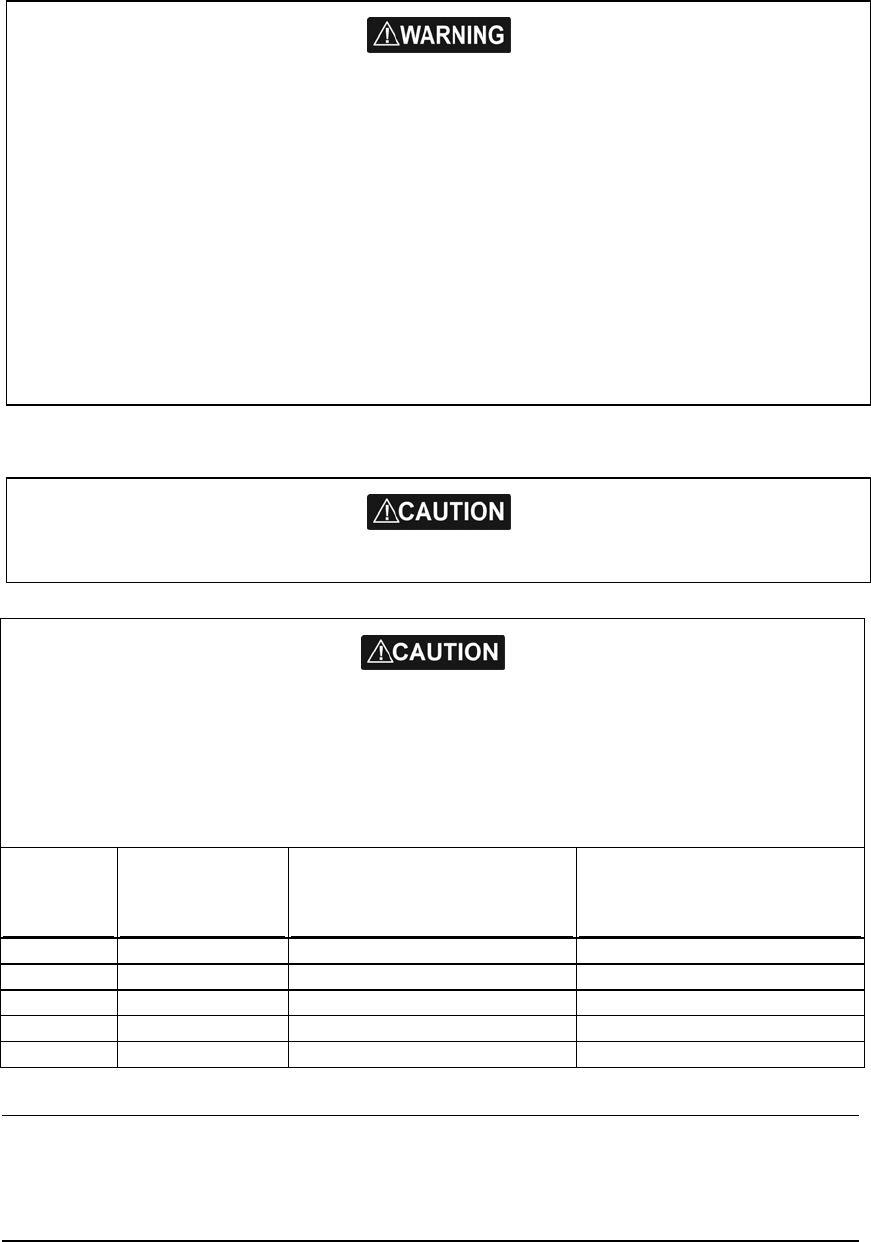
Only qualified personnel should install or service this equipment. Installation or servicing work that is done by
non-qualified personnel can result in equipment breakdown, poor performance of the equipment, fire, electrical
and physical hazards, injury or death.
Wear safety equipment such as a hard hat and a safety belt at all times when installing or working on the scanner.
The scanner is usually installed in an elevated position and serious injury or death can result if a person falls while
installing or working on it. It may be necessary to construct a working platform, particularly for the installation.
The scanner is heavy and an open array may start rotating at any time. Install the radar system in a location that
will minimize the possibility of anyone being struck or injured by it.
Install the scanner in an elevated position to minimize the radiation hazard to personnel.
Never look directly into the scanner at close range while the radar is operating.
Radar scanners emit electromagnetic energy at a frequency that can be harmful at close range. Always keep the
recommended safe distance from the scanner as follows:
Scanner
Model
Vertical beam
angle of scanner
(degrees)
Minimum safe distance
(100 Watts per m² average power
density) Note 1
Minimum safe distance
(10 Watts per m² average power
density) Note 2
2 kW 30 1.6 ft (0.5 m) 4.6 ft (1.4 m)
4 kW 25 3 ft (0.9 m) 9.3 ft (2.8 m)
6 kW 20 3.6 ft (1.1 m) 11.5 ft (3.5 m)
10 kW 20 9.5 ft (2.9 m) 3 ft (9.0 m)
25 kW 20 18 ft (5.5 m) 57 ft (17.4 m)
NOTES: Limits apply to exposure within the vertical beam angle.
Note 1: Peak occupational exposure limit pursuant to IEC 60936 Clause 3.27 and IEC 62252 Clause 4.32
Note 2: General public exposure limit pursuant to IEC 60936 Clause 3.27 and IEC 62252 Clause 4.32
Northstar 25 kW Radar Installation Manual
8
